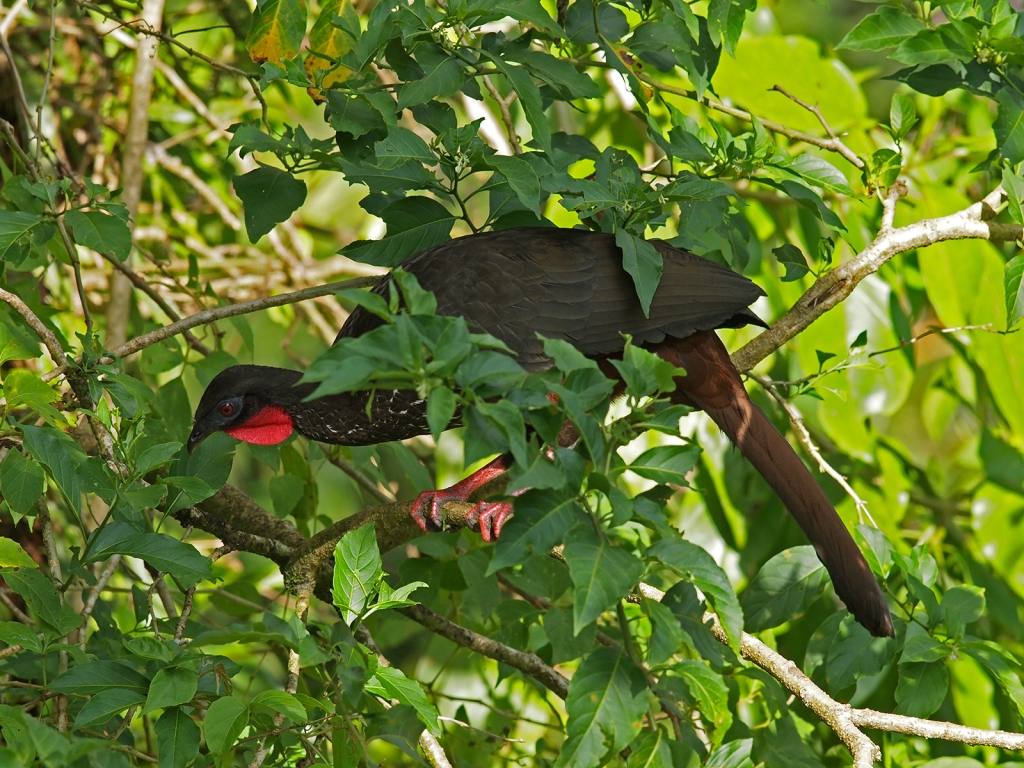Return of Bird of the Week: Crested Guan
Last week you met your first Guan, the Black Guan. This week it’s a close cousin, the Crested Guan, another arboreal Cracid.

The Crested Guan is much larger than the Black, and is one of the largest of its genus, coming in at more than two kilograms. The bright red dewlap, red legs, black body, white-scalloped chest feathers and brownish tail make it another very distinctive species. And noisiest: not only does it have a loud, repetitive honking call, when it flies from tree to tree its landing sounds like a train wreck.
For a species that has been hunted for millennia, it is incredibly confiding. Here the Mexican subspecies arrived for a chat with Mrs. WC, on the hood of our guide’s Jeep.

This wouldn’t seem to be a successful survival strategy, however charming it was to experience.
There are three subspecies of the Crested Guan; WC has seen and photographed two. Surprisingly little is known about the bird. Almost nothing about the breeding behavior, although there is some evidence the males lek in the dark predawn.

The species ranges from southern Mexico to northern Peru, although WC has seen it most often in Costa Rica and western Panama. It’s most often seen in pairs or in small flocks of 4-6 bird, possibly family groups. It’s rarely seen on the ground, although WC has a bad photo there, showing the crest that gives the bird is common name.

There’s a bit of motion blur, the hazard of a shooting a moving bird in shadow against a bright background, but you can make out the crest.
The experts disagree on whether this species is threatened. The Red List has it as a species of least concern, citing its extensive range; Partners in Flight point to the loss of 50% of the population in Mexico in the last 25 years and regard it as near-threatened.
For more bird photographs, please visit Frozen Feather Images.